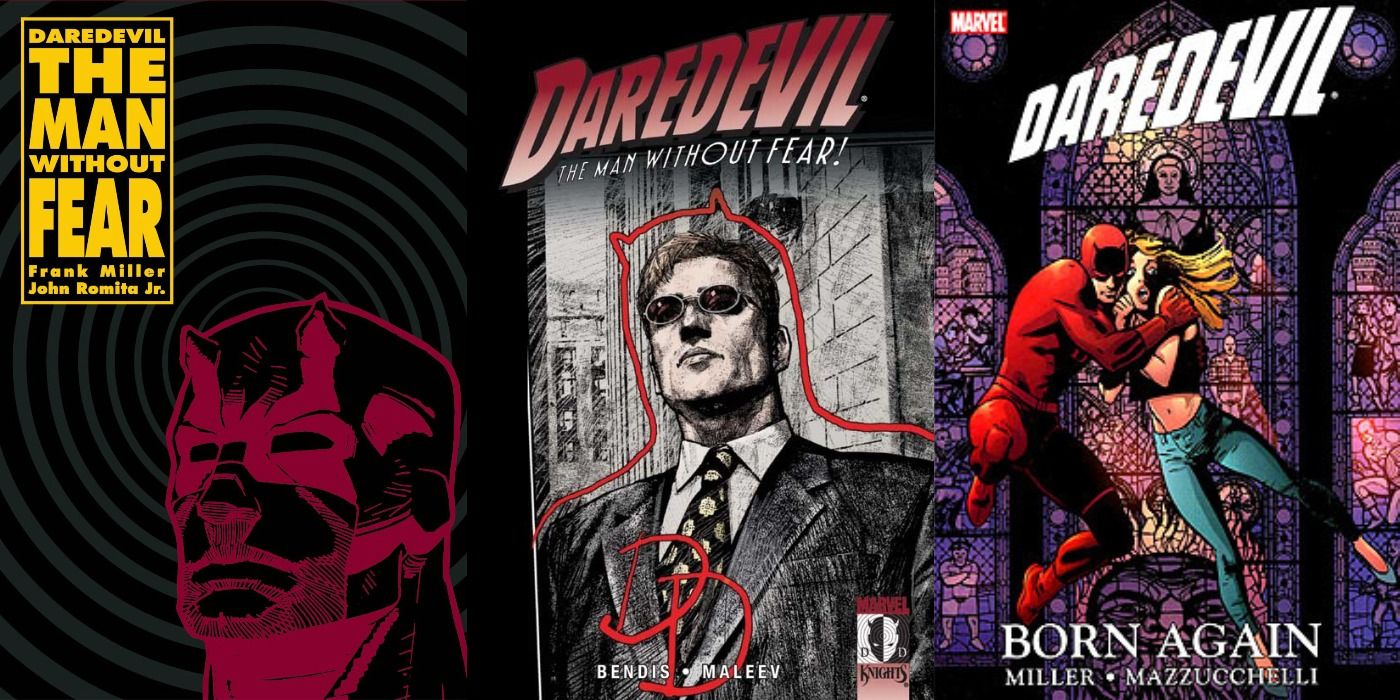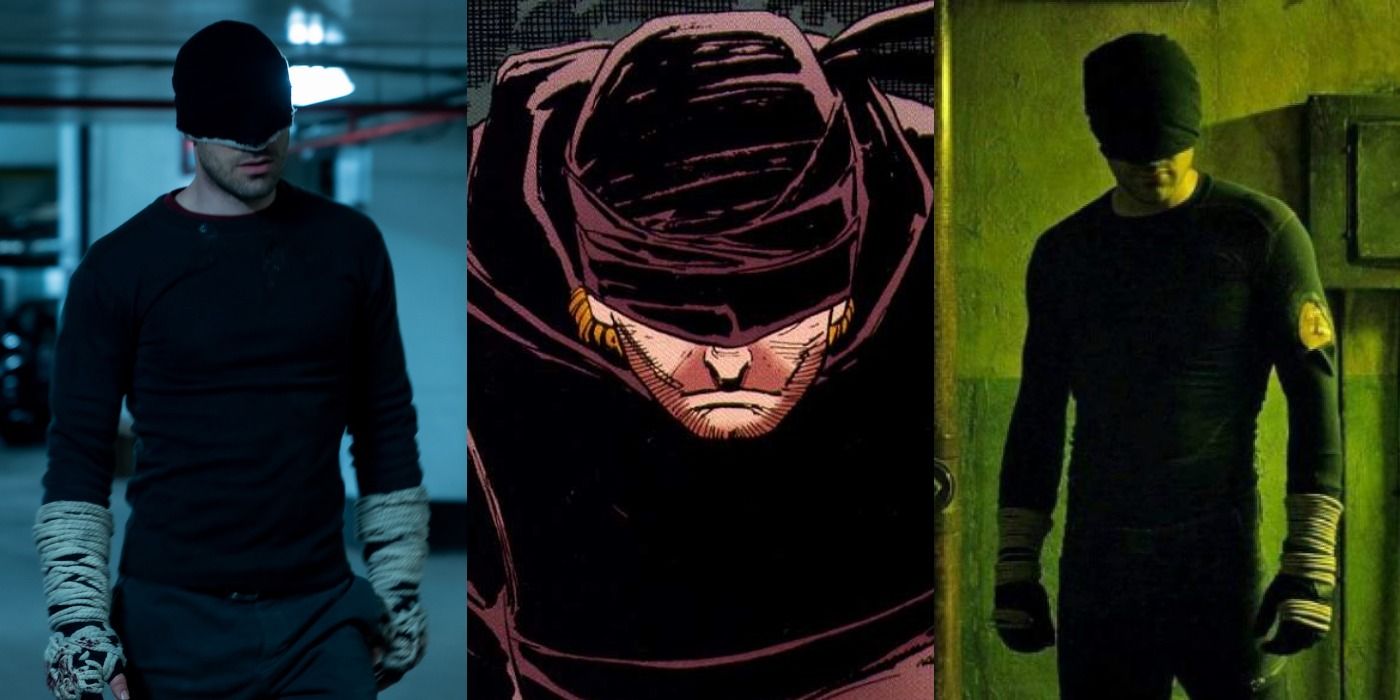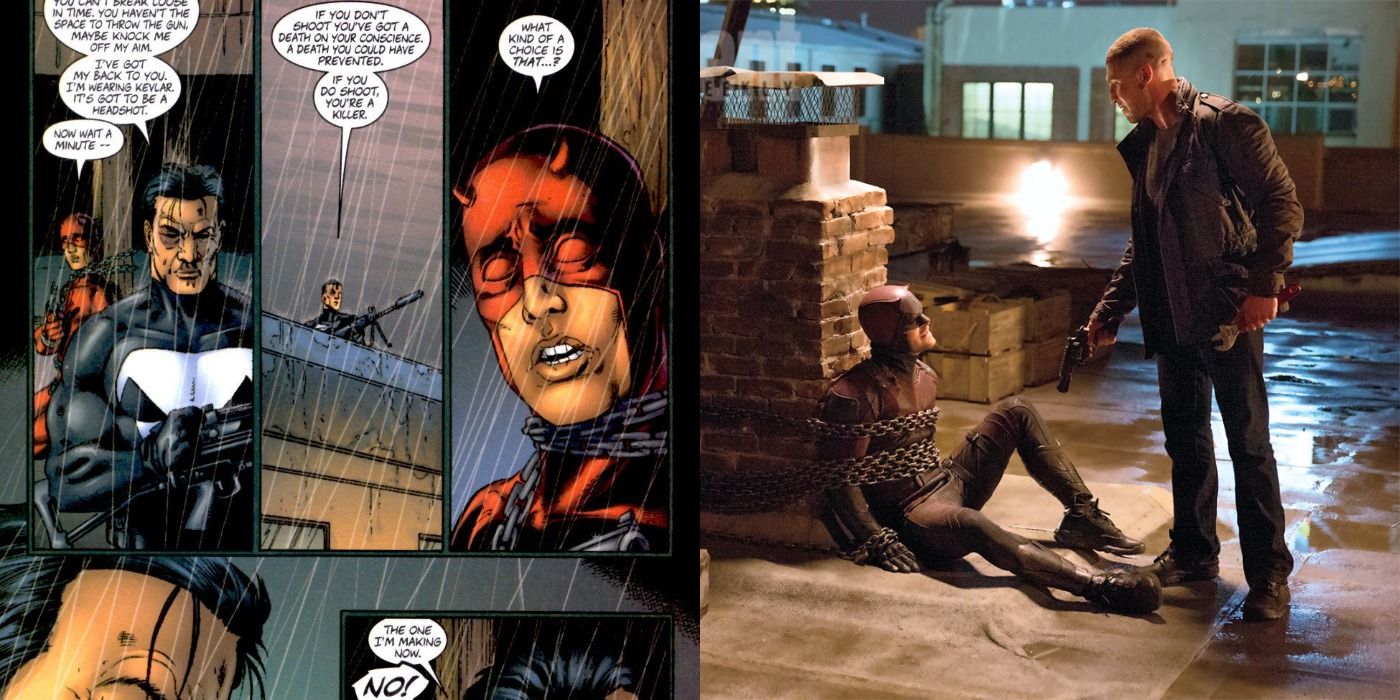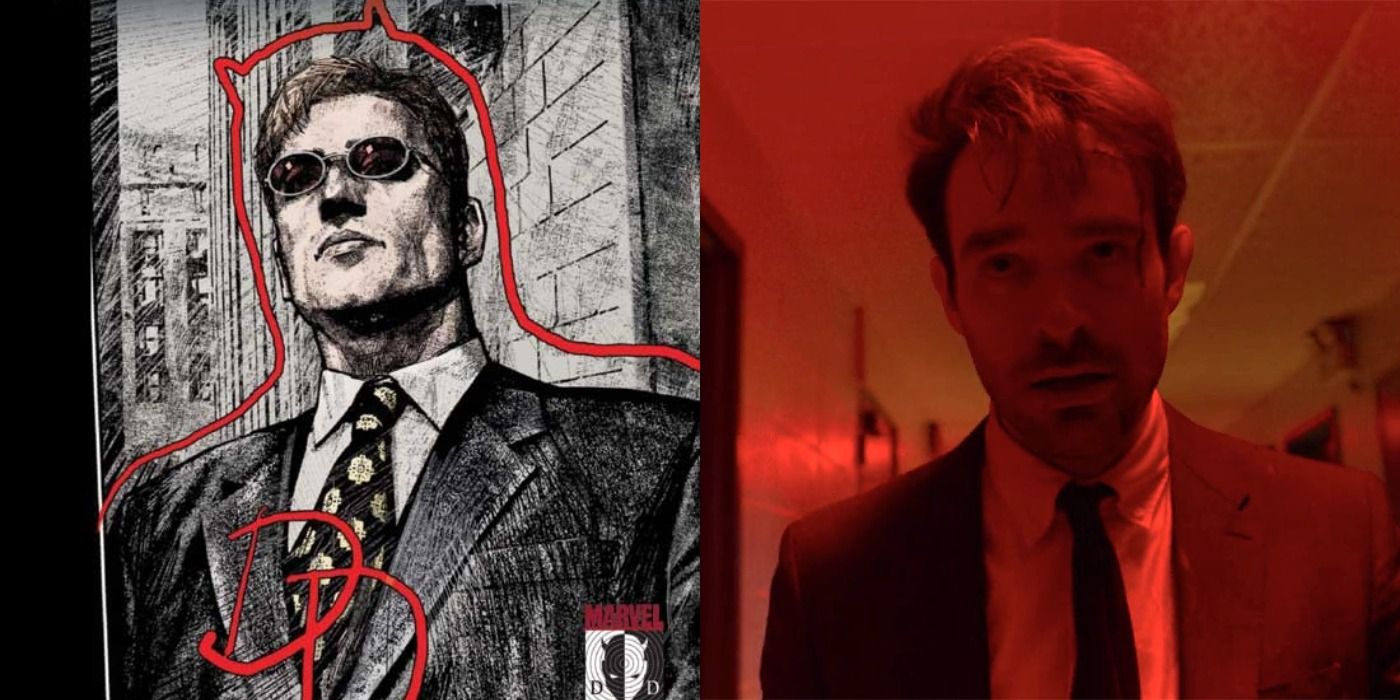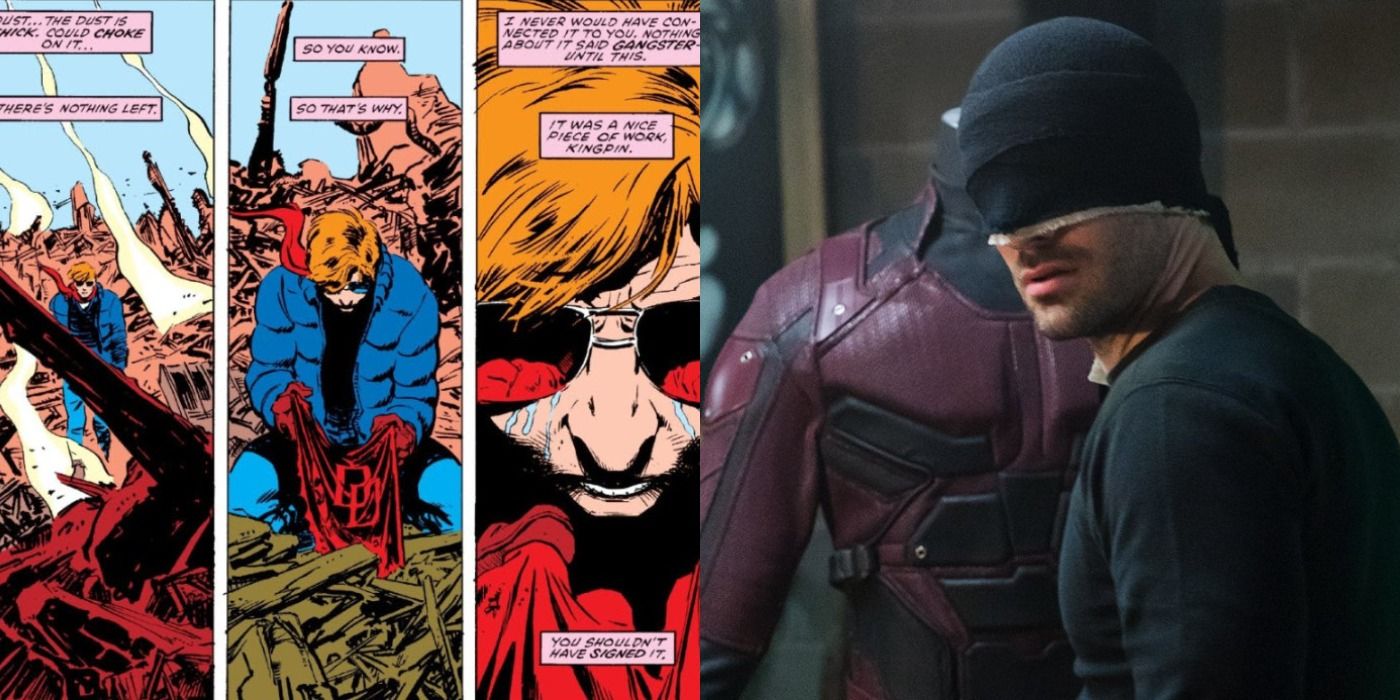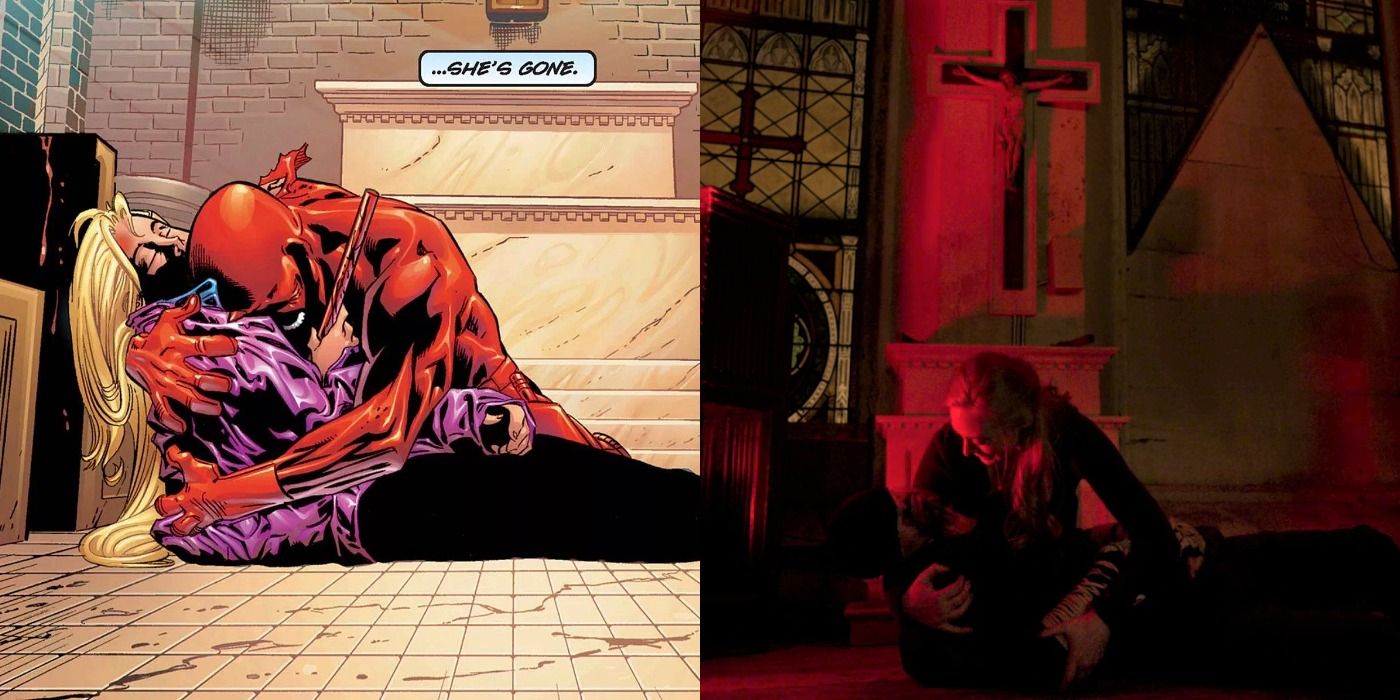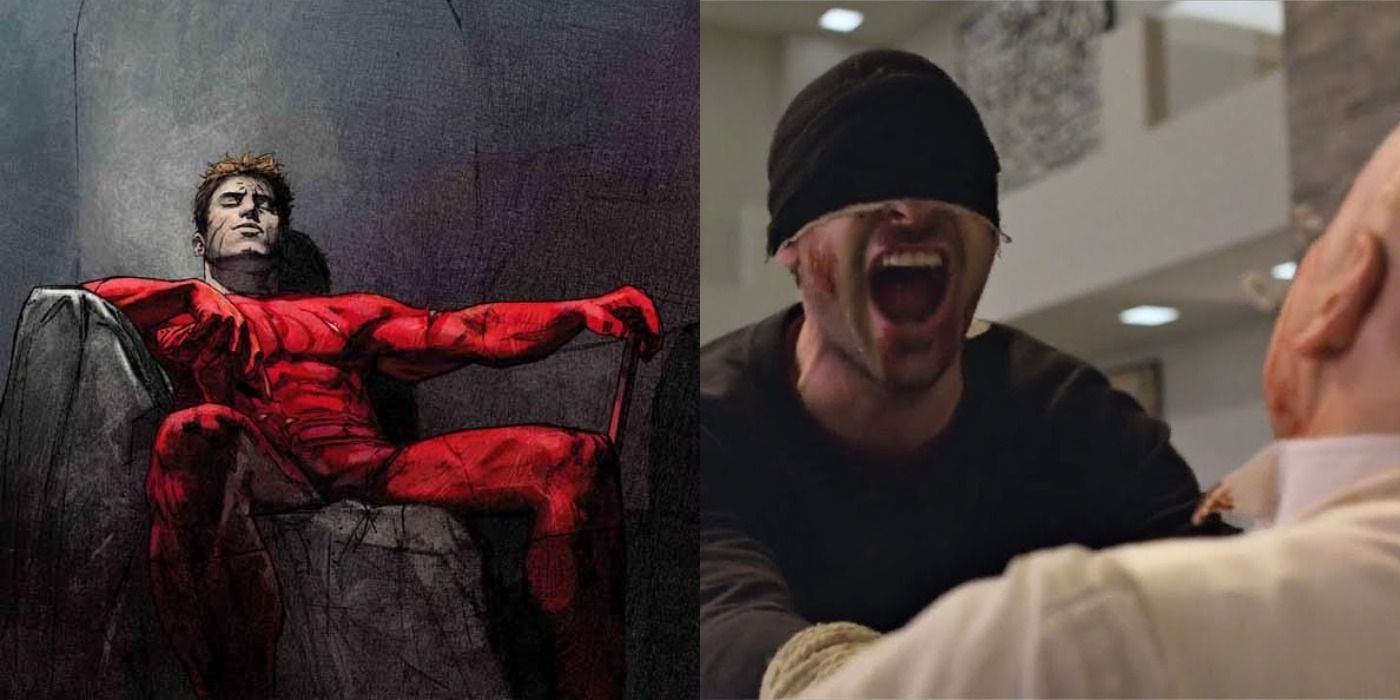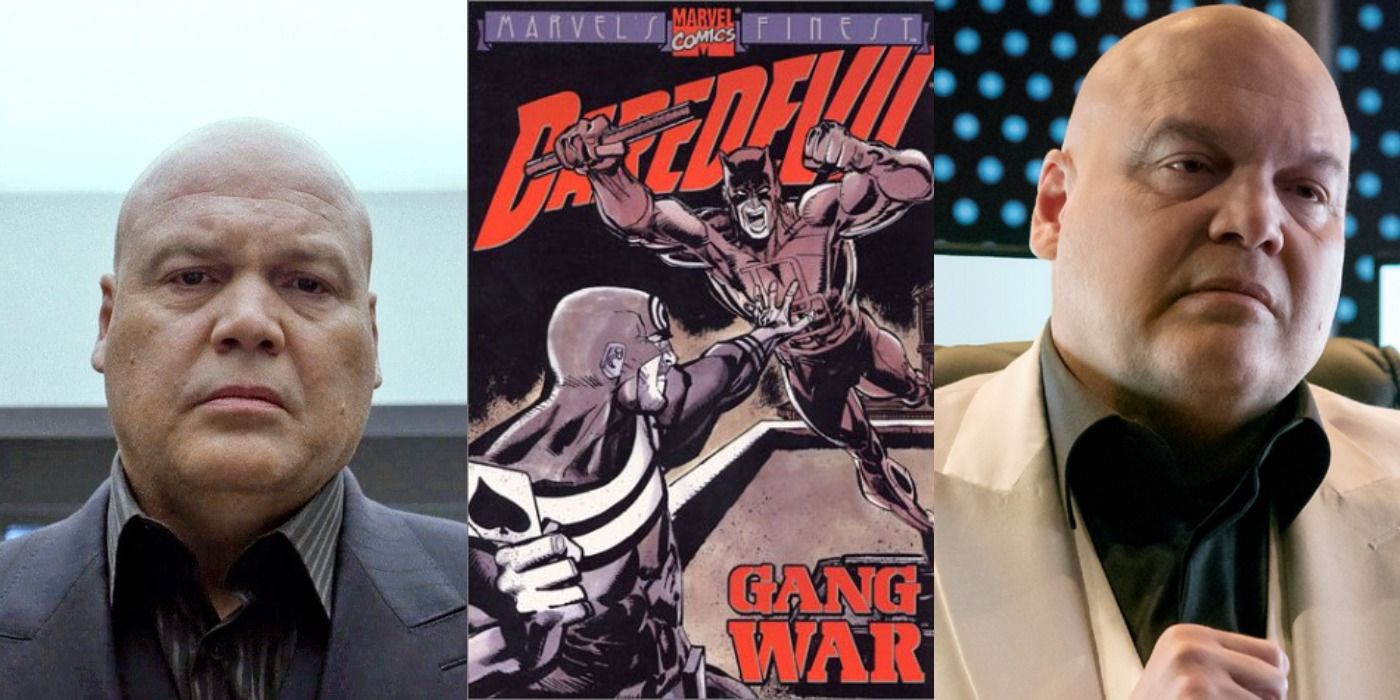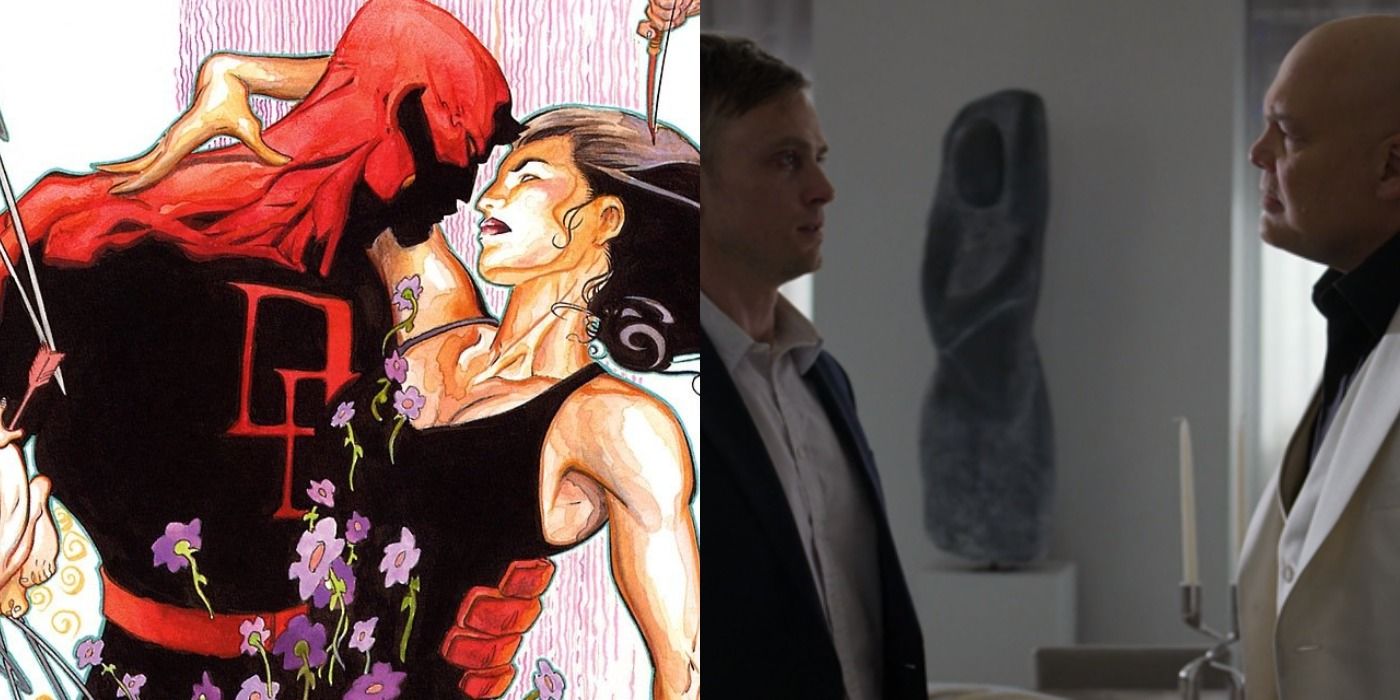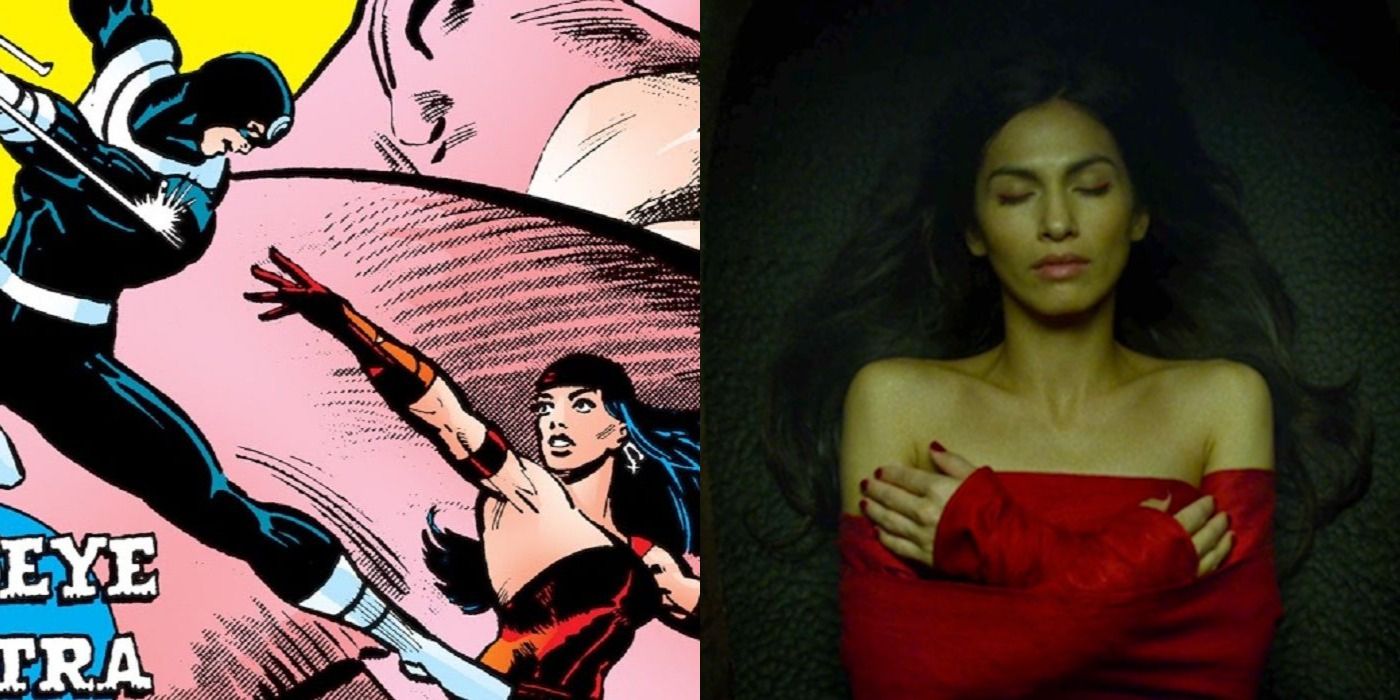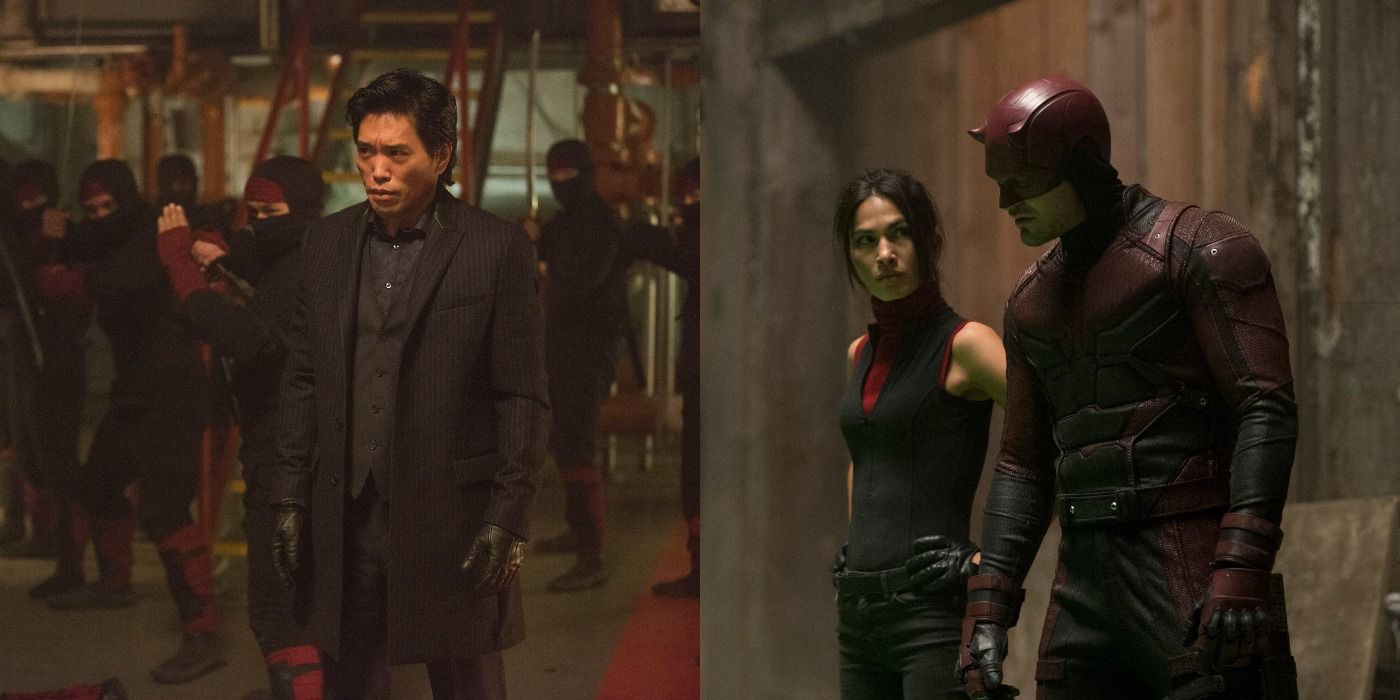Daredevil on Netflix pushed the superhero further into mainstream success and out of the dark spot of the 2003 live-action movie. This adaptation took cues from several different comic books from the character's mythology, namely drawing from the gritty crime-noir stories that helped to redefine the Man Without Fear when Frank Miller took over writing duties.
The execution of the origin story was vital since it was the first major live-action reintroduction of the character in over a decade, but the handling of his more full-fledged and experienced Daredevil stories in the following seasons was effective in cementing the series' status as one of the best comic book adaptations ever made.
The Man Without Fear (Season 1)
Miller's Batman: Year One is cemented as among the best comic origins, but in the following decade, he gave a similarly graceful treatment to Daredevil. The Man Without Fear gives his origin a remake, envisioning it through the lens of a crime-drama, and was instrumental in nailing down the tone of the show beginning with season 1.
The black suit before the red was an original creation of Miller and artist John Romita Jr. for The Man Without Fear and was a focal point for Matt Murdock's character arc in the premiere season--and the third. And while Wilson Fisk/Kingpin is a central antagonist in the season, it does see some influence to how The Man Without Fear ominously sets him up in the background before his future chronological roles opposite Daredevil in the comics.
The Choice (Season 2)
While it's a Punisher comic, The Choice story was clearly incorporated early on in season 2 of Daredevil. Jon Bernthal's iteration of Frank Castle/the Punisher was one of the most critically praised elements to come out of Netflix's corner of the Marvel universe, and his violent brand of justice clashing with Daredevil was arguably the best scene out of that season.
The Choice both served as narrative inspiration and as a direct comic reference in Daredevil, as the imagery is practically identical with the Devil of Hell's Kitchen chained down and with a gun duct-taped to his hand. The principle was similar, with the two arguing over whether the hero's methods of justice with the intent of redemption or the anti-hero's method of judge, jury, and executioner all at once is effective.
Out (Season 3)
While Born Again is understandably more important to the foundation of season 3, Out--a story arc from Brian Bendis and Alex Maleev's acclaimed run--did get thrown into the mix. Things get generally more hectic during Out, as Matt Murdock's identity as Daredevil gets leaked to the FBI and is relentlessly smeared all over newspapers.
Matt and Foggy are hounded by the press for comment every day, with only a legal technicality keeping the former's secret--and lie--safe. Season 3 of Daredevil is on a smaller scale in terms of where the consequences reach, but it was a clear influence on the show's plot device for Matt Murdock's identity being more quietly leaked to (also) the FBI, with the organization unable to definitively pin Daredevil on him.
Born Again (Season 3)
Out of the different stories that helped put together what season 3 would be, Miller's Born Again was the spine of it all. The acclaimed writer started on Daredevil comics in the 1970s as an artist, but the '80s saw him reach his peak with the character in Born Again; a story that sees Matt put through tremendous psychological and physical turmoil by Kingpin's hand.
Karen Page sells his identity, which eventually reaches Fisk, giving him a license to destroy Matt's life. It's the overall premise for season 3 since Fisk here aims to completely libel and slander both his identities as Matt Murdock and Daredevil. Likewise, both see Matt realize that Sister Maggie is his mother, on top of all the other stressors suffocating him.
Guardian Devil (Season 3)
One of the most impactful Daredevil comics to resonate in the superhero's life is Kevin Smith and Joe Quesada's Guardian Devil. Matt being a conflicted Catholic is crucial to his complex characteristics, and this comic makes this a storytelling pillar. Netflix's Daredevil, like any good story of his should, does this throughout, but season three uses Guardian Devil to flip the script on Bullseye's victim.
In the comic, he murders Karen Page with Daredevil's billy club after getting intel to do so fed to him by Fisk. Season 3 nearly sees the same event play out, but Father Lantom takes the fall for her, begging quietly to Matt for forgiveness. It keeps the heartwrenching tragedy--and recreates some of Daredevil's most iconic comic panels--while and simultaneously keeping fans on the edge. The theme of forgiveness also strikes deep into Matt's internal conflict.
Hardcore (Season 3)
Bendis' Hardcore story arc sees a vicious resolution after so much turmoil. Daredevil is exasperated, with his identity being leaked to the FBI and dealing with murder charges. Meanwhile, Kingpin is trying to re-establish his dominance in Hell's Kitchen.
He finally has enough of the invasions into his life and violently beats down Fisk in front of his underlings, declaring himself the new Kingpin of New York to run the city. Season 3 isn't quite that dark, but the final confrontation between Daredevil, Kingpin, and Bullseye is similarly cathartic. It's palpable, and essentially the "good end" version of Hardcore, but the show clearly references the comic once Daredevil viciously beats Kingpin, asserting his dominance, claiming both the city and he defeated him.
Gang War (Season 1, 3)
Miller's work runs deep in the Netflix show, and Gang War serves as some inspiration for seasons 1 and 3's backdrop. However, they each borrow different elements to fit the narrative of their respective plotlines. Fisk's wife, Vanessa, is kidnapped after it's revealed that Kingpin has evidence to shake Hell's Kitchen's hierarchy in the criminal underworld.
It forces Fisk out of the shadows out of fear of her death, and then Bullseye becomes another wildcard. Season 1 hadn't introduced Bullseye, but the crime-drama aspect of the show involved the different players of Hell's Kitchen's organized crime making power-plays--and against each other. Season 3 shows Kingpin's return to reassert power, this time, directly using Bullseye as the extra antagonist and unpredictable agent.
Parts Of A Hole (Season 3)
While reportedly the premise for Echo's Disney+ show, Daredevil season 3 uses aspects of Parts of a Hole. It centers around a tragic "forbidden love" story with Matt and Maya/Echo, where Echo is adopted by Kingpin and manipulates her by claiming Daredevil killed her father when Fisk himself had him killed.
Season 3's spin has Bullseye somewhat taking the place of Echo. Fisk grooms Poindexter/Bullseye to be his assassin by exploiting his dangerously traumatized psyche and deadly marksmanship. There's nothing "personal" per se between Daredevil and Bullseye--even under false pretenses--but Fisk killing the woman Dex stalked and sending him to assassinate the real Devil of Hell's Kitchen pays homage to Parts of a Hole.
Bullseye Vs. Elektra (Season 2)
Though Bullseye wasn't in season 2, the general character arc for Elektra borrowed from the conclusion of Miller's run of the same character. Season 2 was generally well-received also but stands out as the "black sheep" when stuck between seasons 1 and 3.
This is partly due to how Elektra's death at the end was essentially the death in #181. The difference being that her demise was because of the Hand rather than Bullseye. While this could have been fleshed out, it came off a bit anticlimactic given the mesh of the Punisher and Elektra/Hand plotlines.
The Hand War (Season 2)
It doesn't necessarily have a collected name from Miller's comics, but the Hand cult was the major threat of season 2. Both the Hand and Elektra were Miller's creations, and she was introduced as having been a love interest of Matt's past and sharing the same mentor in Stick.
Elektra attempts to gain approval of Stick by infiltrating the Hand, but ends up killing him by their manipulation. Her introduction in season 2 and rebellion were story beats taken into account. The conflicted dynamic between Daredevil, Elektra, and Stick was pivotal for the main plotline, and Stick's death at the hands of Elektra carried over into The Defenders.

